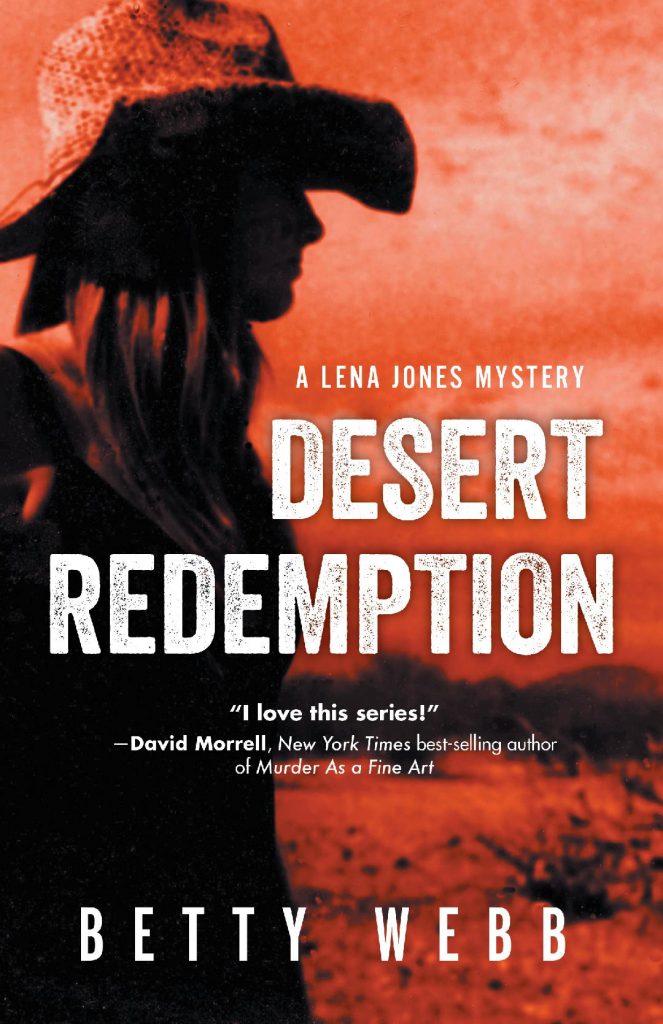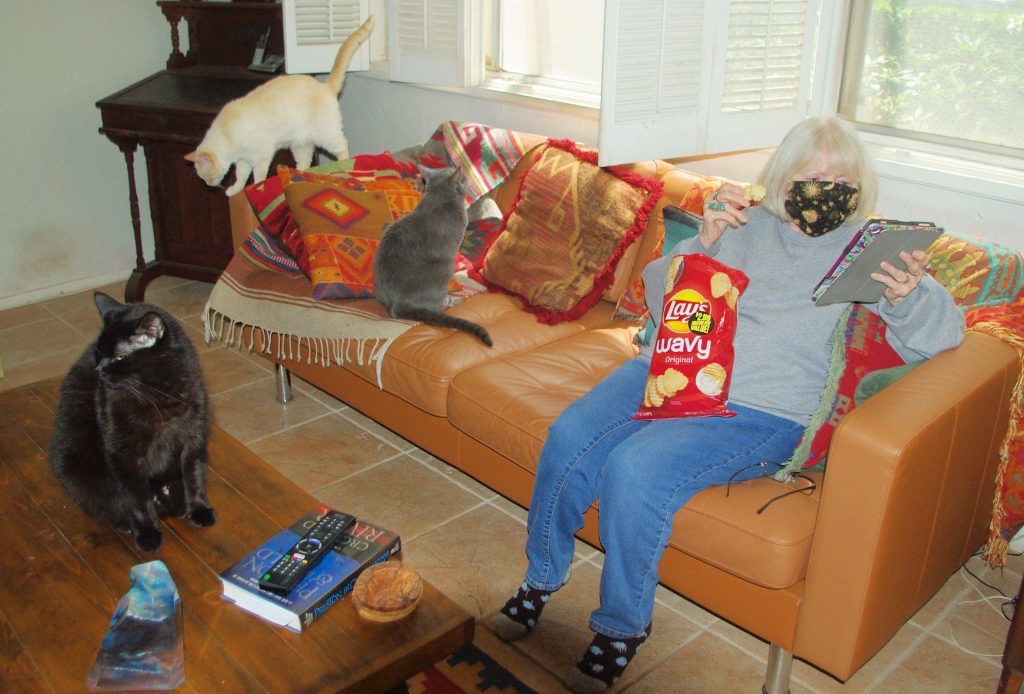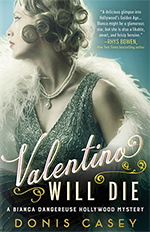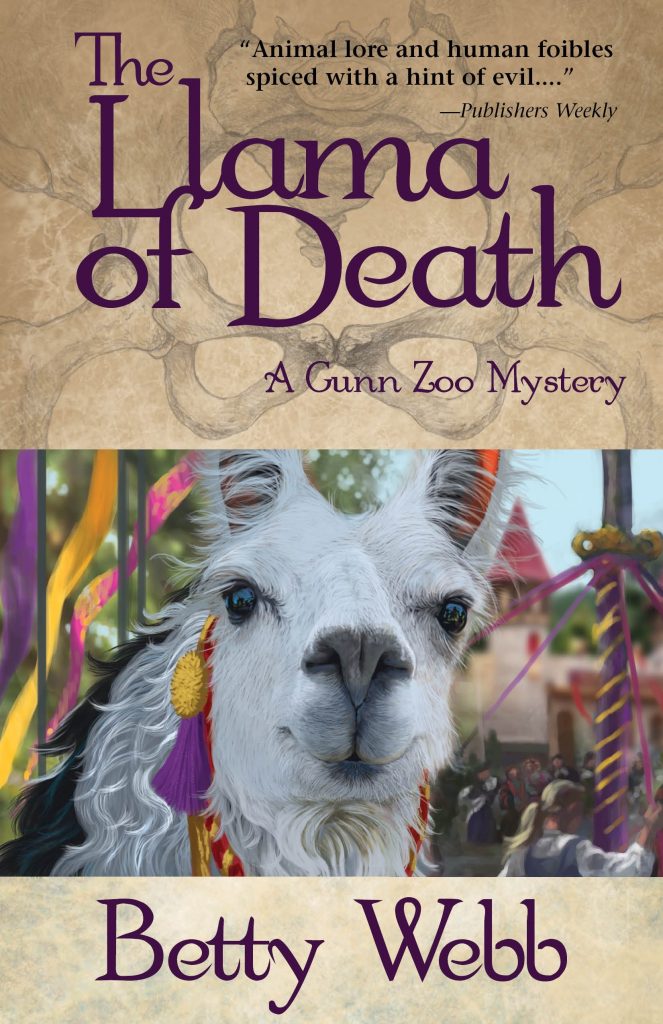
I am beyond thrilled to welcome Betty Webb to tell us her story this month, and quite a story it is. You thought your family was eccentric, did you? Well, let Betty tell you a thing or two about eccentricity. Betty is the author of the best-selling Lena Jones mystery series (Desert Redemption, Desert Wives, etc.) and the humorous Gunn Zoo mysteries (The Panda of Death, The Otter of Death, etc.). Lost in Paris, the beginning of her new mystery series, set in 1922 France, will be released in April of 2023; Found in Paris, arrives in April 2024. Before beginning to write mystery novels, Betty spent 20 years as a journalist, interviewing everyone from U.S. presidents, astronauts who walked on the moon, Nobel Prize-winners, and polygamy runaways.

Reality Into Fiction
by Betty Webb
William Faulkner once famously said, “The best job for a writer is piano player at a brothel.”
That’s terrific advice for writers who can play the piano, but I’m not one of them. Heck, I can’t even play “Chopsticks.” Instead, I get my ideas from my exceedingly weird family, who are weird enough to give me tips for character-driven mysteries, but not so weird that they ruined my childhood.
Still, inserting real people into a novel can be a risky business. When you base your characters on real people, you must take steps to avoid getting sued. Accordingly, I always change my real-life characters’ names, change their physical appearance, and sometimes even change their gender. More about that later.
When I was putting together the cast of characters that make up my Gunn Zoo series (The Anteater of Death, The Koala of Death, etc.), I based my protagonist sleuth on myself, a freckled-faced redhead with an abiding love of animals (Yes, I used to be a redhead until Mother Nature had her way with my hair follicles). I named this character Theodora Bentley, aka “Teddy.” She’s a zookeeper who lives on a houseboat in California’s Monterey Bay, and as zookeepers go, she’s fairly normal. But Teddy’s parents are weird. Readers often remark on the weirdness of Caro, Teddy’s clotheshorse mother. Caro is a wealthy ex-beauty queen with a string of husbands—five, so far, and perhaps more to come in later books. Since good fiction must be believable, I don’t use the actual seven husbands my own mother accumulated. Mom, just like Caro, her fictional doppelganger, dresses her Chihuahua in baby-sized versions of her own designer wardrobe.
Fictionally speaking again, Teddy’s father is her family’s black sheep. After swindling millions from his own company, pere Bentley skipped the country to take shelter in a South American country that has no extradition agreement with the U.S.—much like my own rascally real-life father, whose financial activities resulted in a gaggle of Feds waving subpoenas. And there’s another art-mirrors-life “coincidence.” In The Panda of Death, a DNA test proves that Teddy’s husband had unknowingly sired Dylan, a handsome 18-year-old who shows up at Teddy’s door, creating a comedy of errors. That happened in my family, too. But despite the scary stories now flourishing on the DNA-influenced internet, my discovery of a long-lost brother turned out to be a delight for everyone—so much so that attendance at the annual Webb family reunion has happily grown in size.
I use my friends for characters, too. In my Lena Jones’ Desert books (Desert Noir, etc.), the character of Dusty, Lena’s dude-ranch cowboy boyfriend, is actually based on an ex-boyfriend of mine, who in real-life was a dude-ranch cowboy named “Dusty.” I’d met this paragon of rascality (another long story) at a real-life Scottsdale, Arizona bar named The Rusty Spur.
Come to think about it, I also write about my daydreams. It started a few years ago when someone asked me, “If you could live anywhere at any time, where and when would you choose?” Talk about an easy question! Ever since I took my first trip to Paris (France, not Texas), I’ve imagined what the City of Lights must have been like during one of the twentieth century’s most creative eras: the Jazz Age. Everyone who was anyone was in Paris then. Ernest Hemingway. Pablo Picasso. Salvador Dali. Mary Cassatt. Cole Porter. Josephine Baker. Coco Chanel.
When our virus-laden Pandemic hit, I escaped from reality by writing two “Paris” books, introducing my readership to the fictional Zoe. She’s a disgraced Southern Belle whose family shipped her off to Paris so she could no longer sully the family honor. Fortunately, Zoe is an artist, so the other American boozehounds greeted her with open arms. Apparently, I wasn’t the only person who needed to escape from our Covid reality, because Poisoned Pen Press/Sourcebooks snapped the books right up. Lost in Paris comes out in April 2023; Found in Paris arrives in April 2024.

Again, the “Paris” books are crowded with real-life people, but this time, the only thing my protagonist and I have in common is our mutual love of art. And Zoe’s life is sad; mine isn’t (knock on wood).
Oops, almost forgot. I don’t just write about my family, friends, and daydreams—I also write about my enemies—one enemy in particular. While I was still working in advertising (a long story I won’t bore you with), I had a boss who was so outrageously awful that I’ve put him/her in three books, where I killed him/her slowly and very, very painfully. In two books, I made him/her male; in another book I made him/her female. Knowing that ex-bosses can be litigious, I took care to change his/her career and his/her physical appearance. Killing him/her was so satisfying I’ll probably murder him/her in more books.
I always sympathize with beginning writers who struggle with character development, and instead, use mere stereotypes. When I see my creative writing students doing that, I advise them to take a closer look at the people in their lives, because real people are always deeper than fictional stereotypes.
As I was putting this article together, I realized I’d never used one particular real-life person as a fictional character in any of my 20 mystery novels, so it’s time to rectify that.
Hank Ducharme—his real name—had a carnival act where he was billed as “The Human Cannonball.” My mom once took me to the Michigan State Fair to watch him get shot from a canon, make a beautiful arc in the sky, and come back to Earth via a safety net. Hank was French-Canadian, and he told the most marvelous stories about the carnivals and circuses he’d headlined. After a few dates, Hank fell in love with my mother (men always did). Believing that the way to my mother’s heart was through her daughter, he bought me my first typewriter, a Smith-Corona portable. Hank’s gift so impressed me that for the first time, I actually lobbied for Mom to marry him (usually I just sulked when she brought home another husband-to-be).

Alas, Mom married an accountant instead. But that too-short relationship with Hank Ducharme wasn’t a total loss. Several years later, I wrote my first novel on that same Smith Corona portable, and since then, I haven’t stopped writing “fiction” about real-life people.
So now, it’s the Human Cannonball’s turn.
Check Betty’s websites at www.bettywebb-mystery.com and www.bettywebb-zoomystery.com.




April 20th, 2022
I will for sure try some of these tips in my new projects. I am also so excited about the new books coming out that are set in Paris in the Roaring 20s.
April 24th, 2022
I had this advice from a writer who would know. If you put a character in your book of a well-known man that people would guess who he was, even if you’ve changed a lot, give him a verrrry small penis.
April 24th, 2022
Great idea, Virginia!